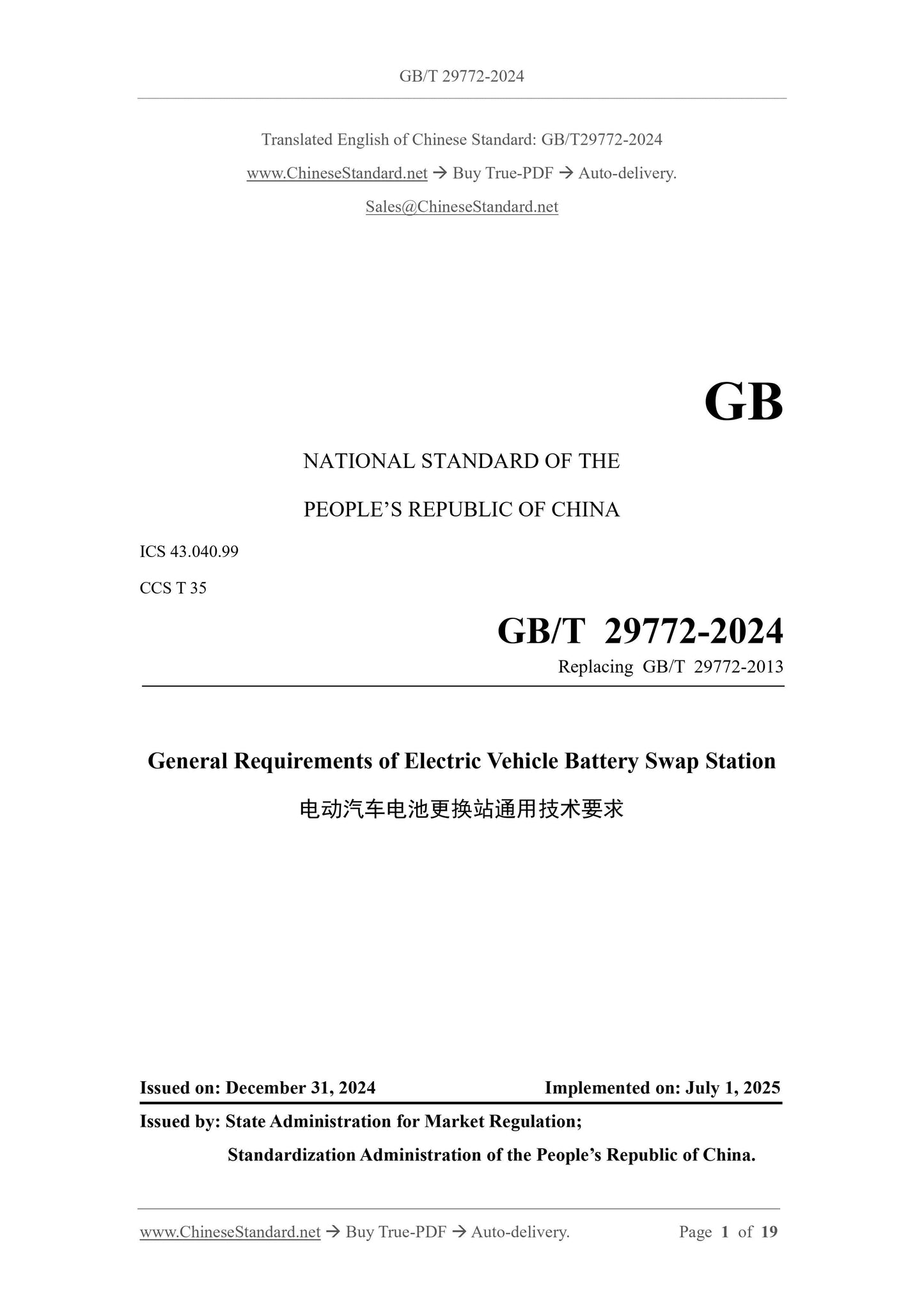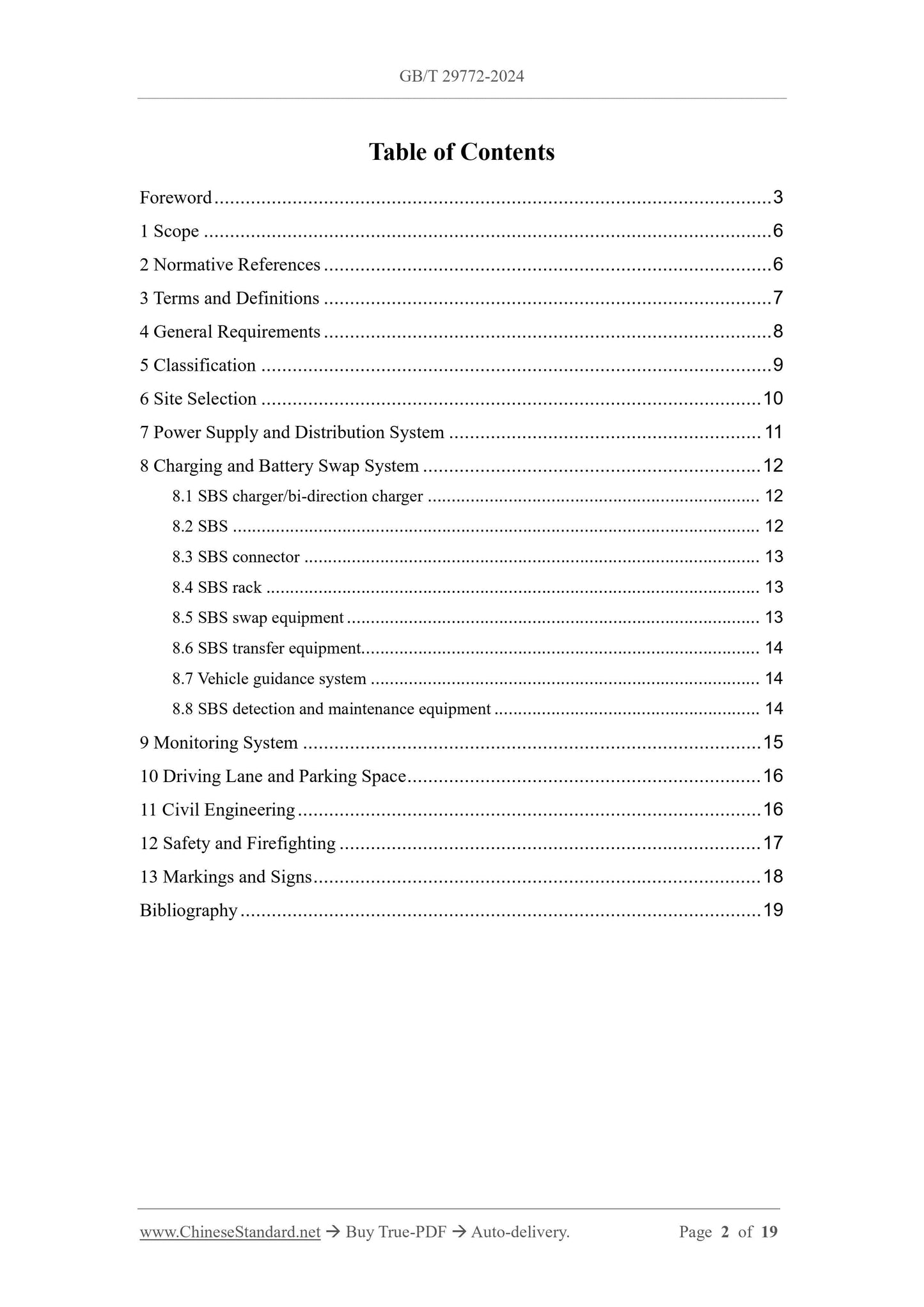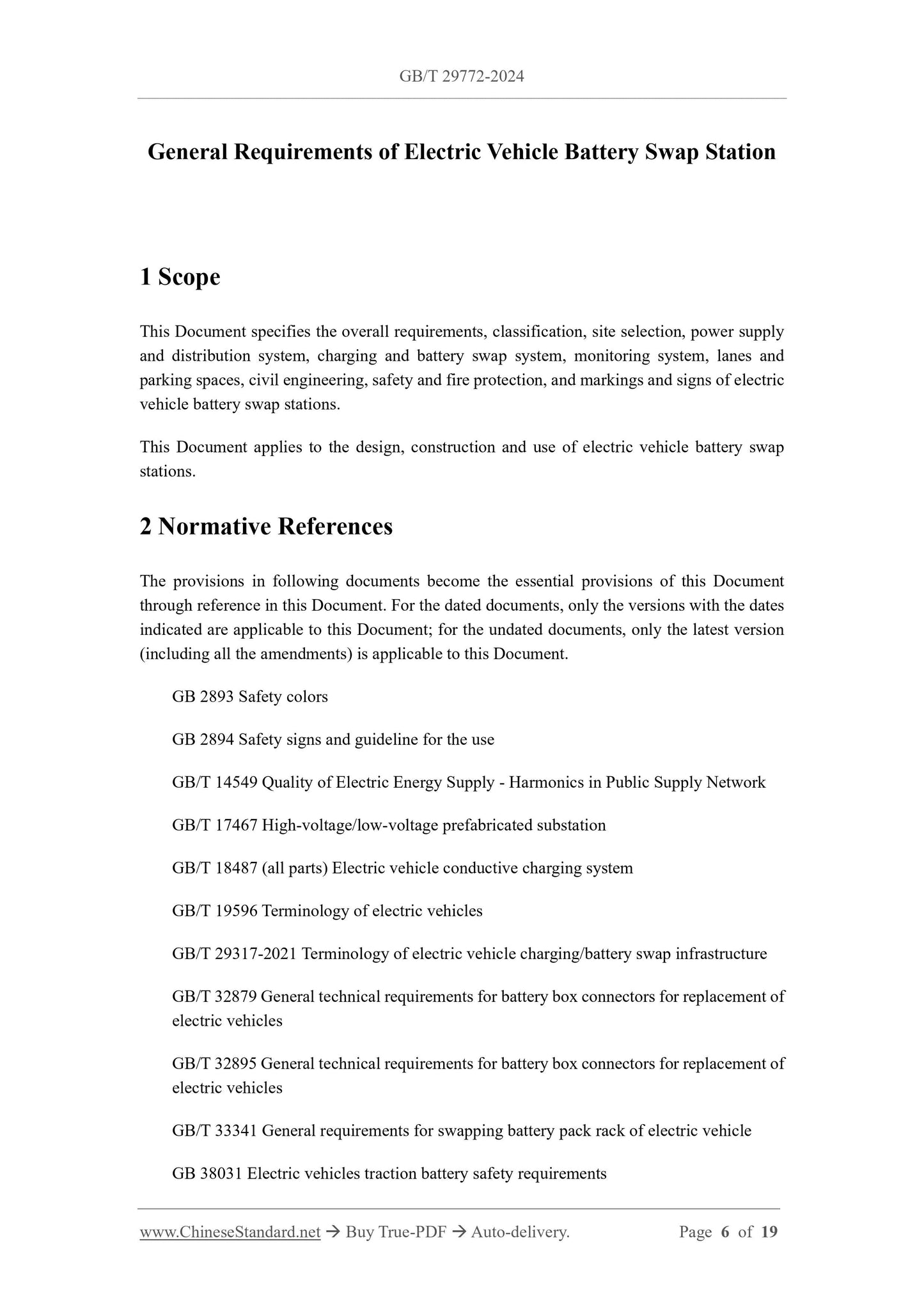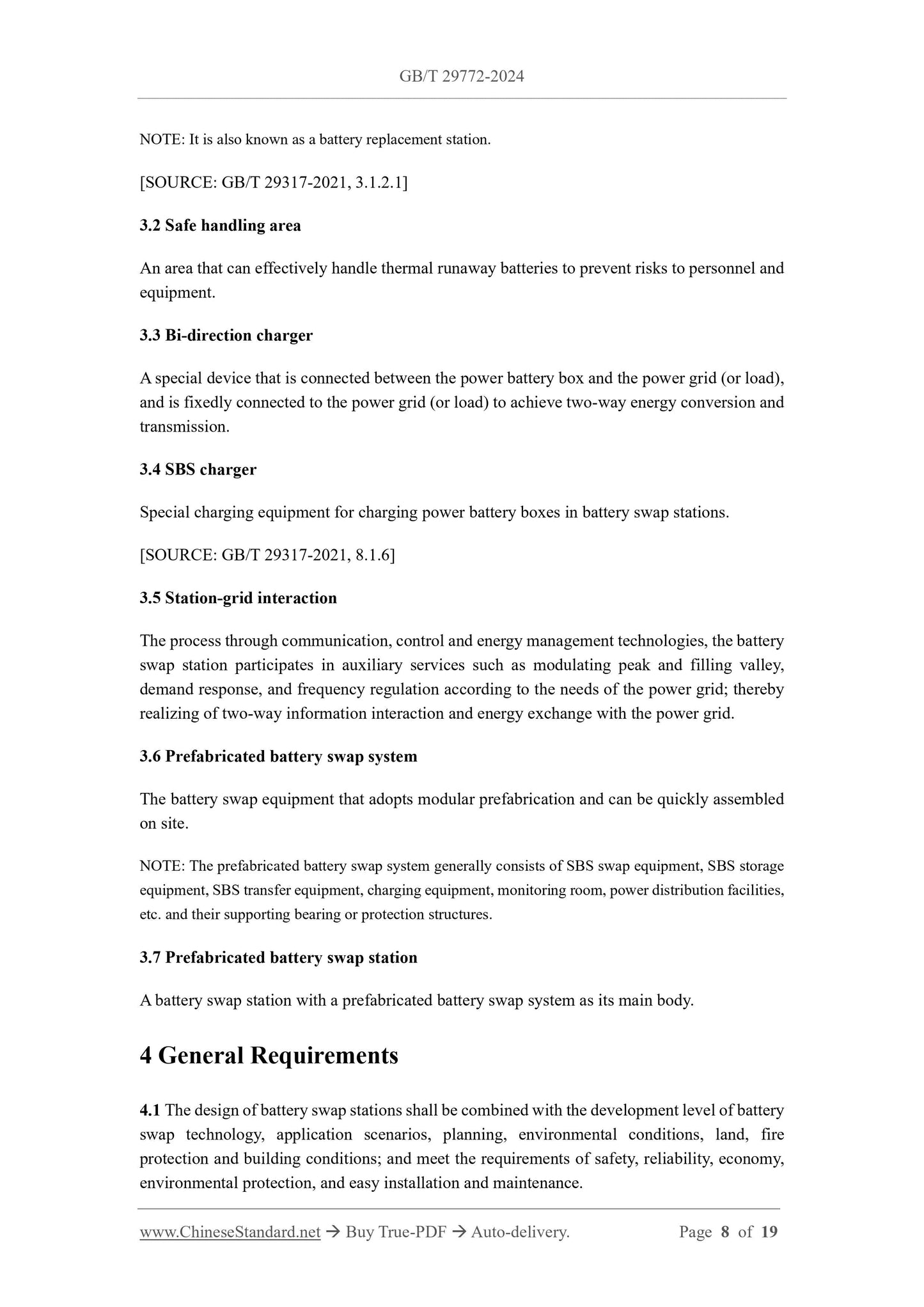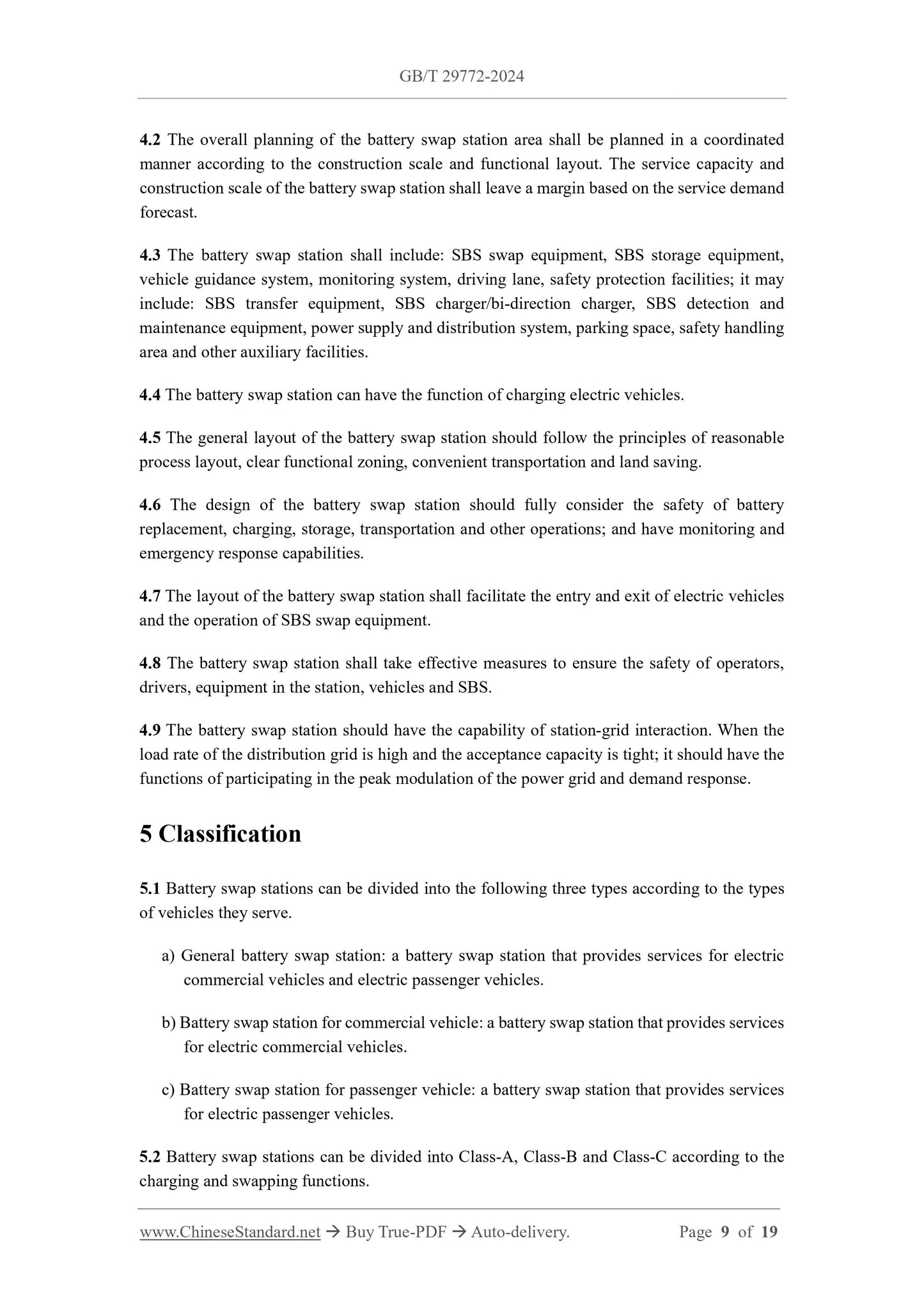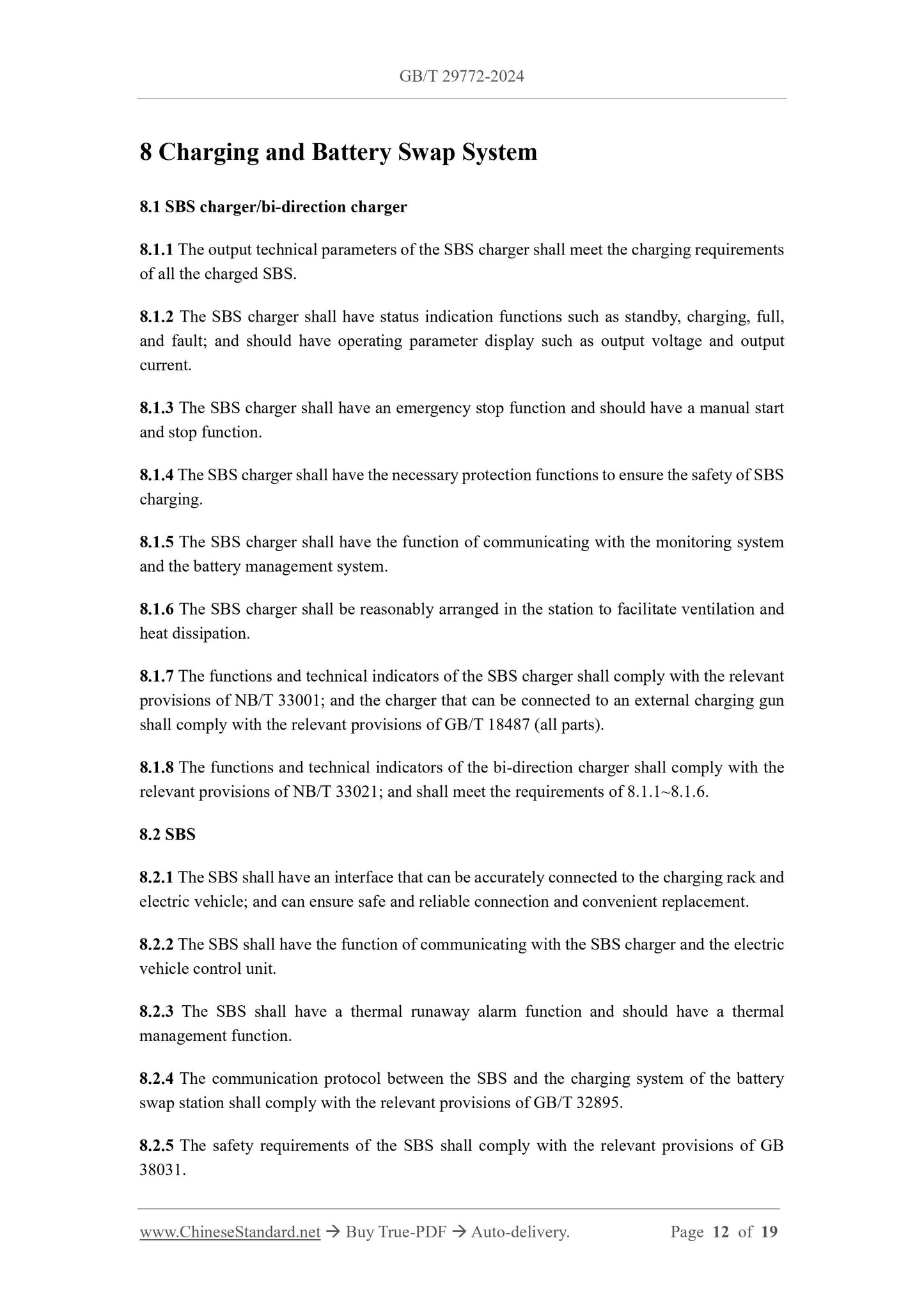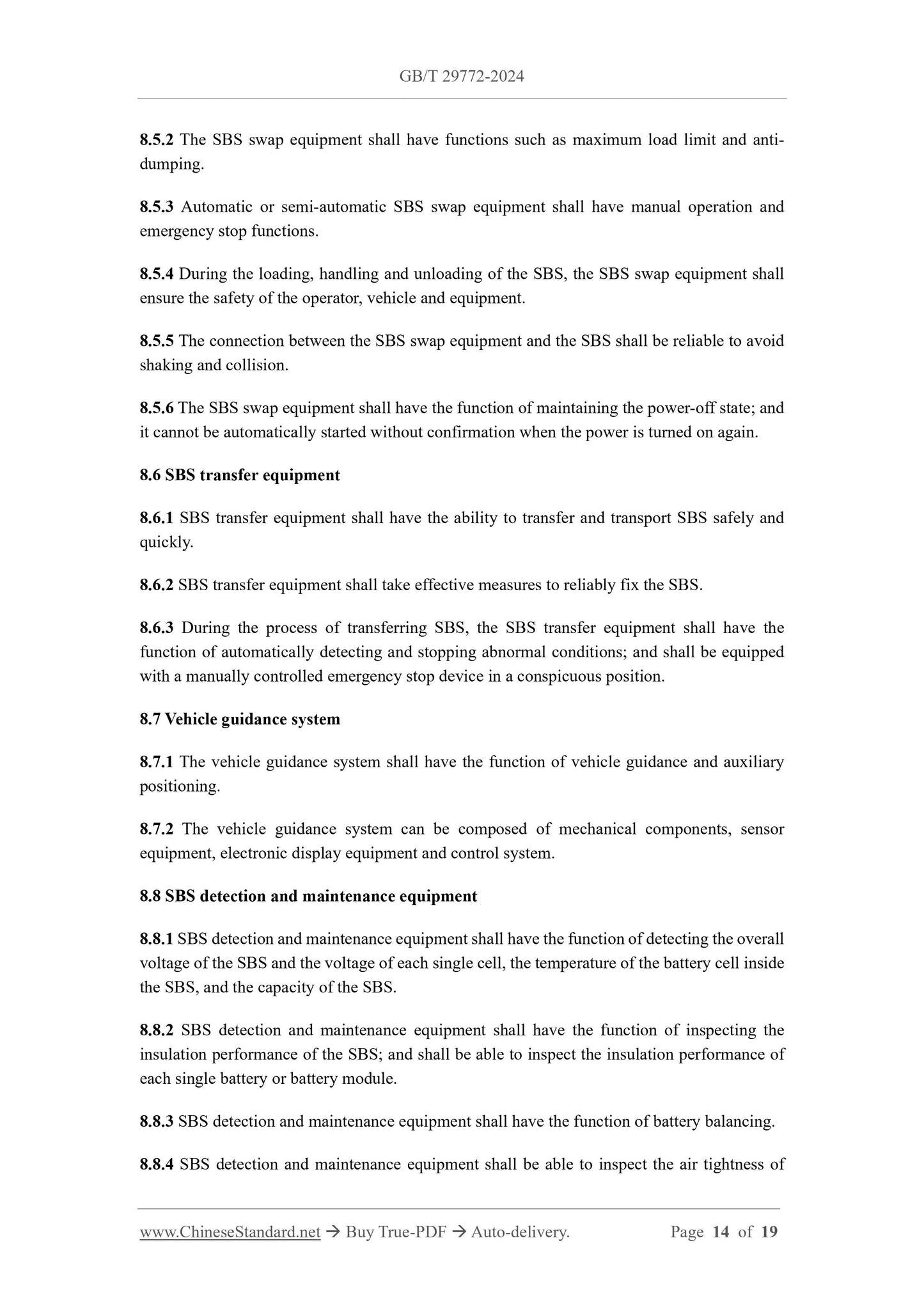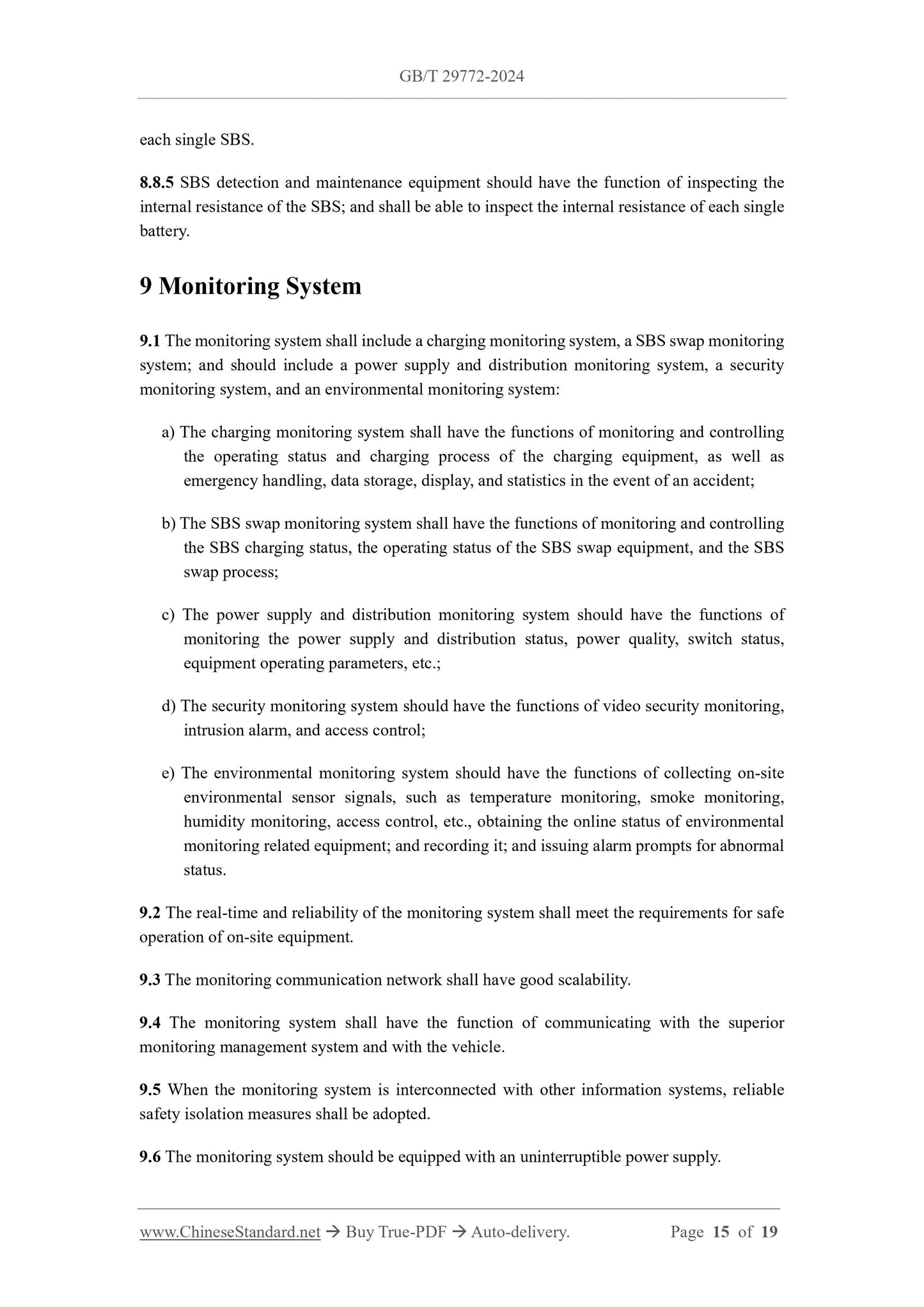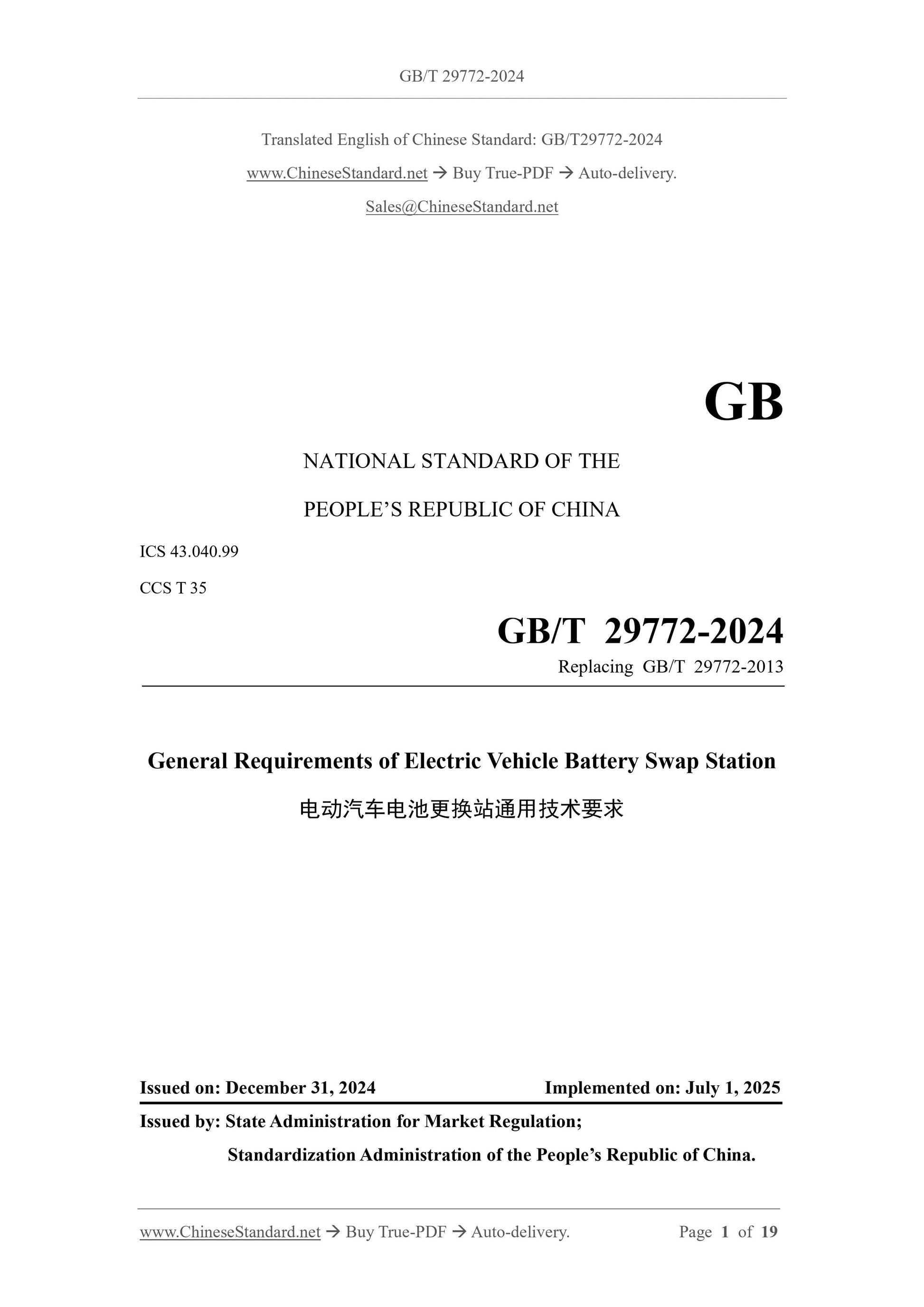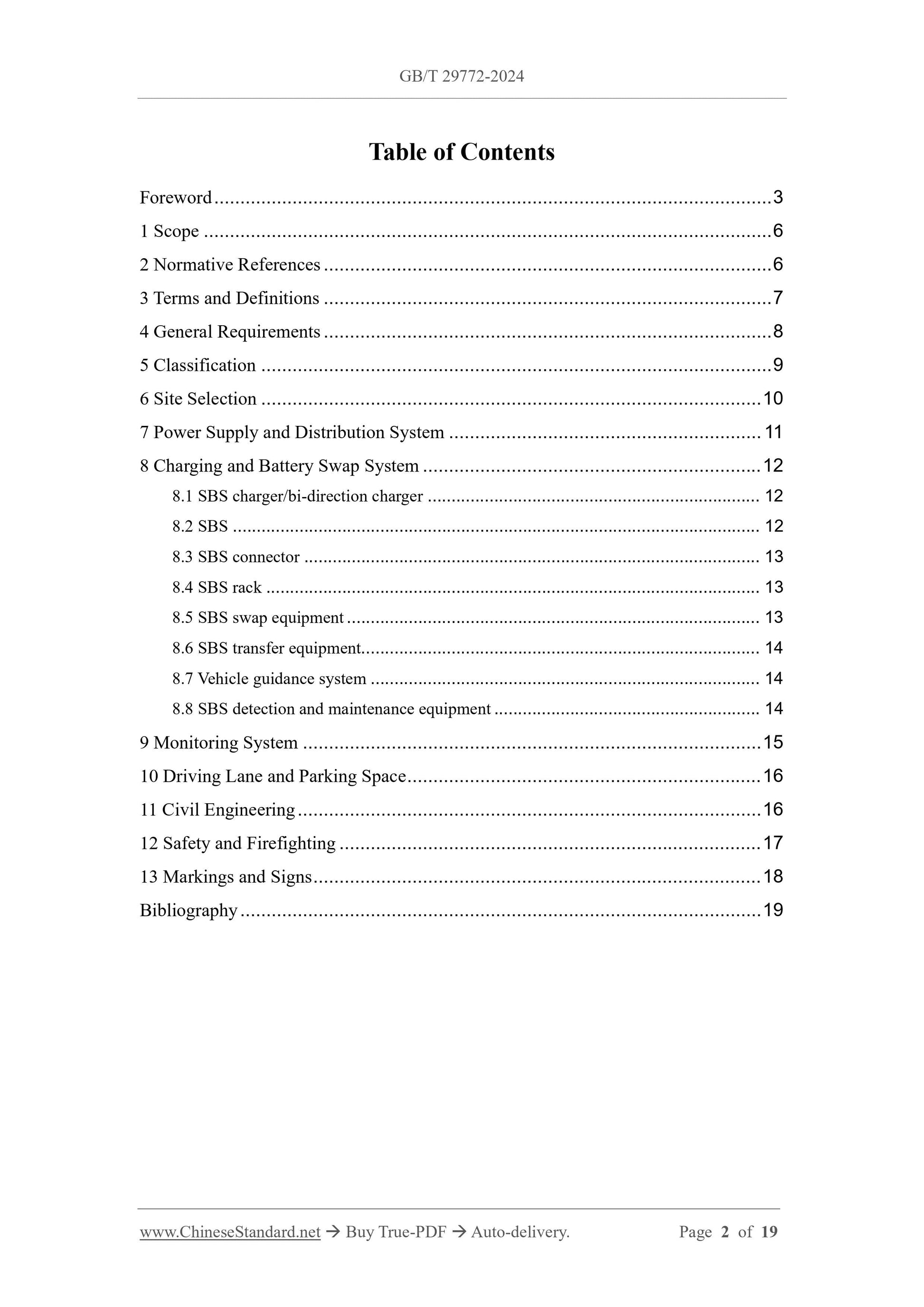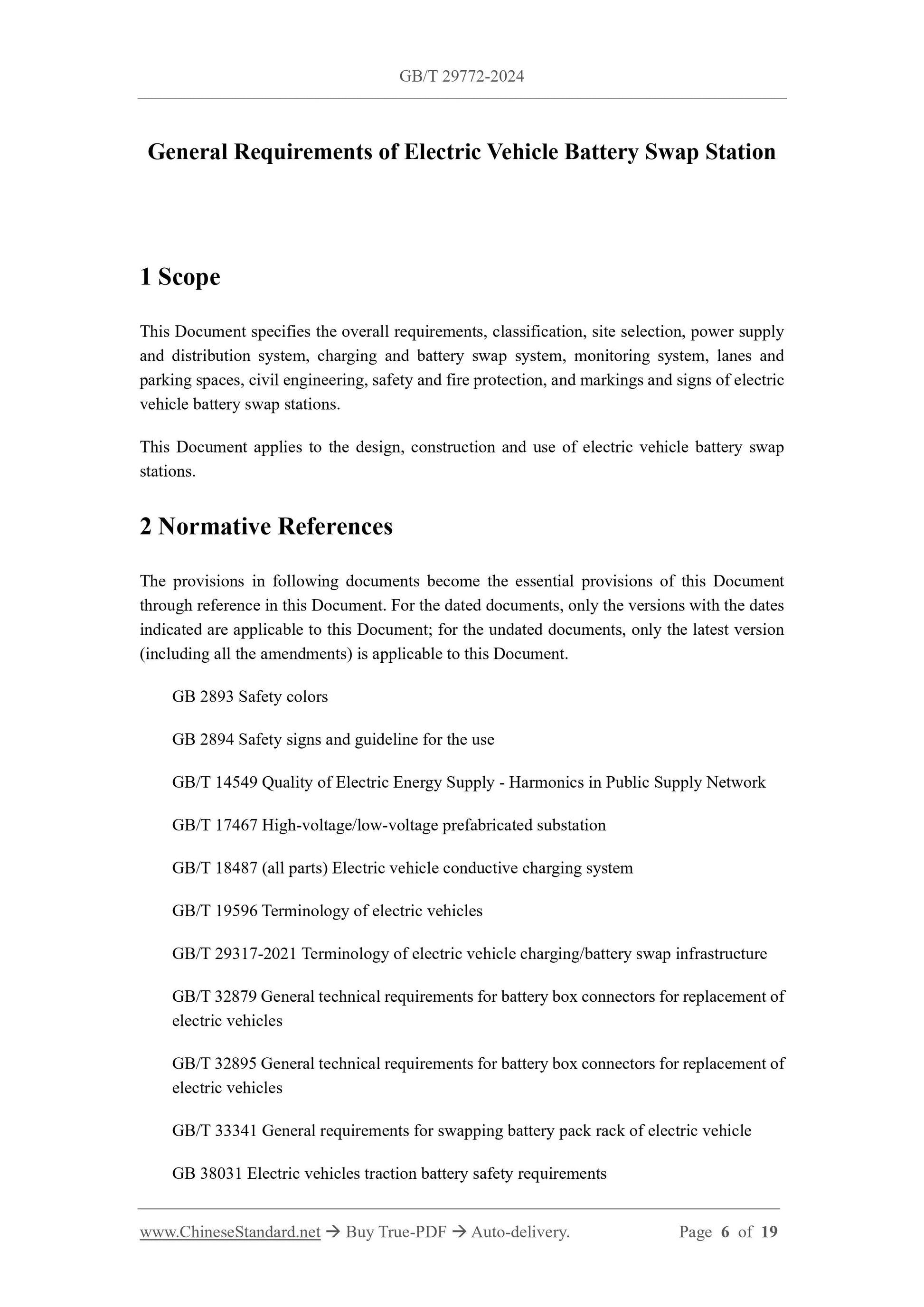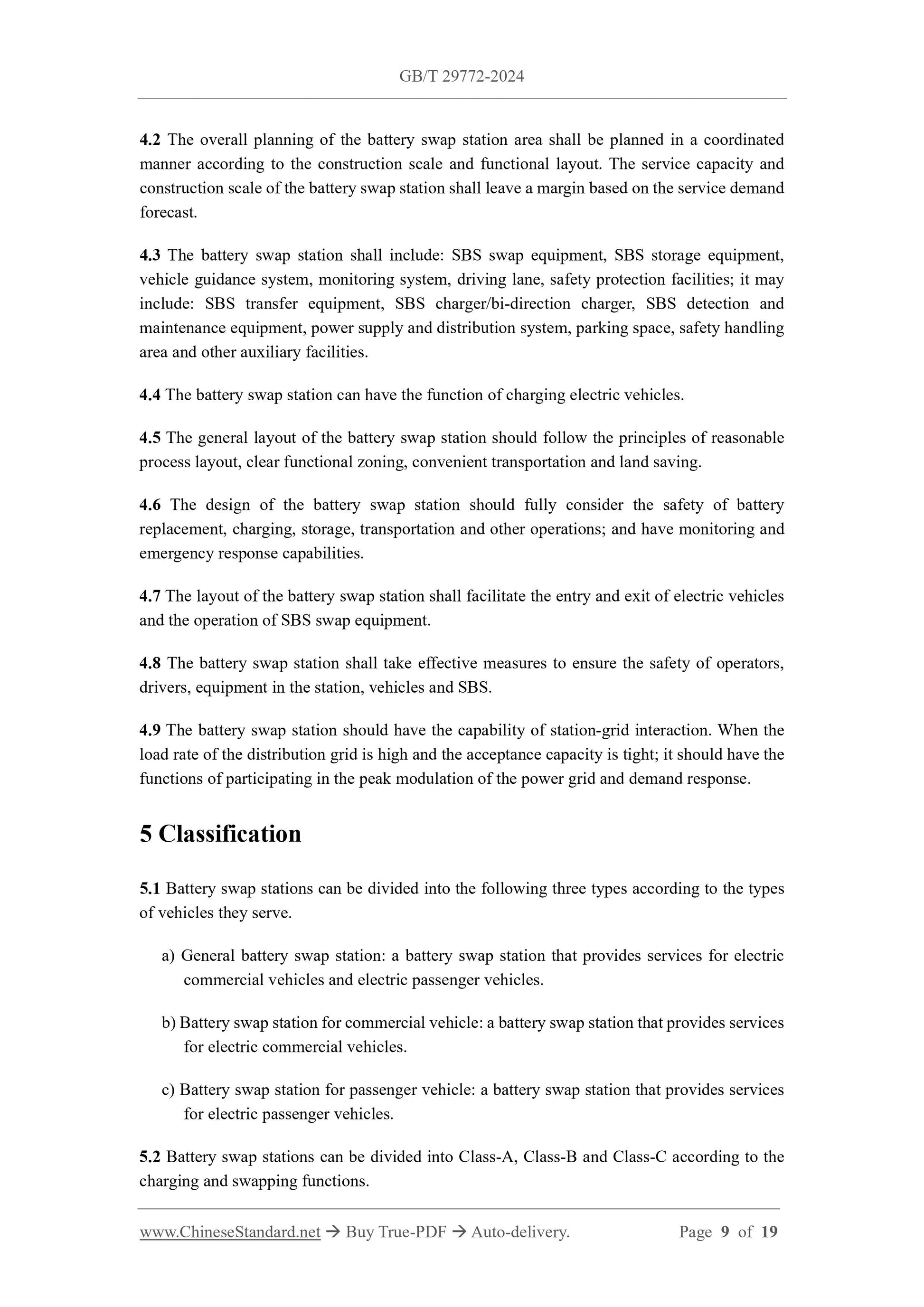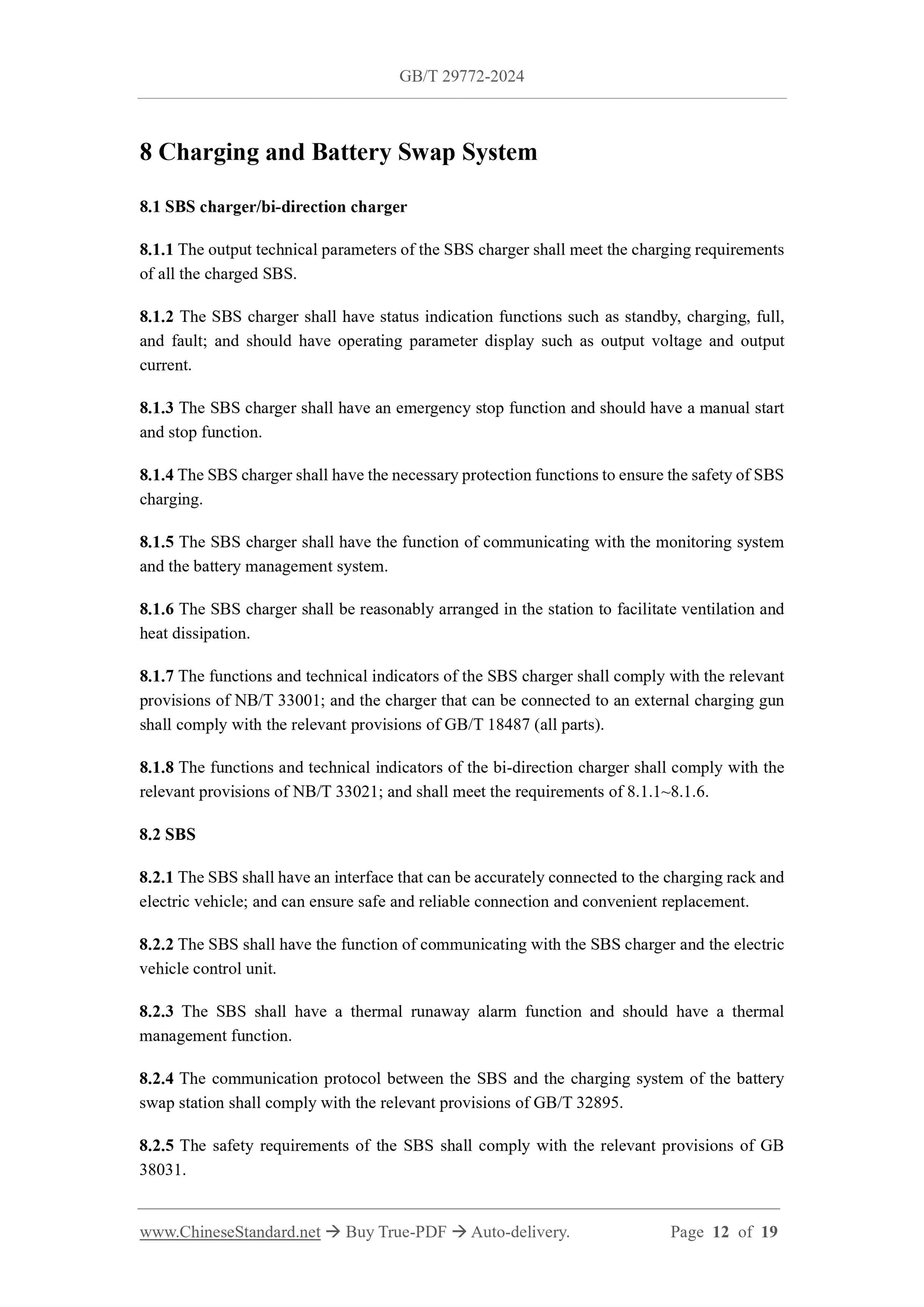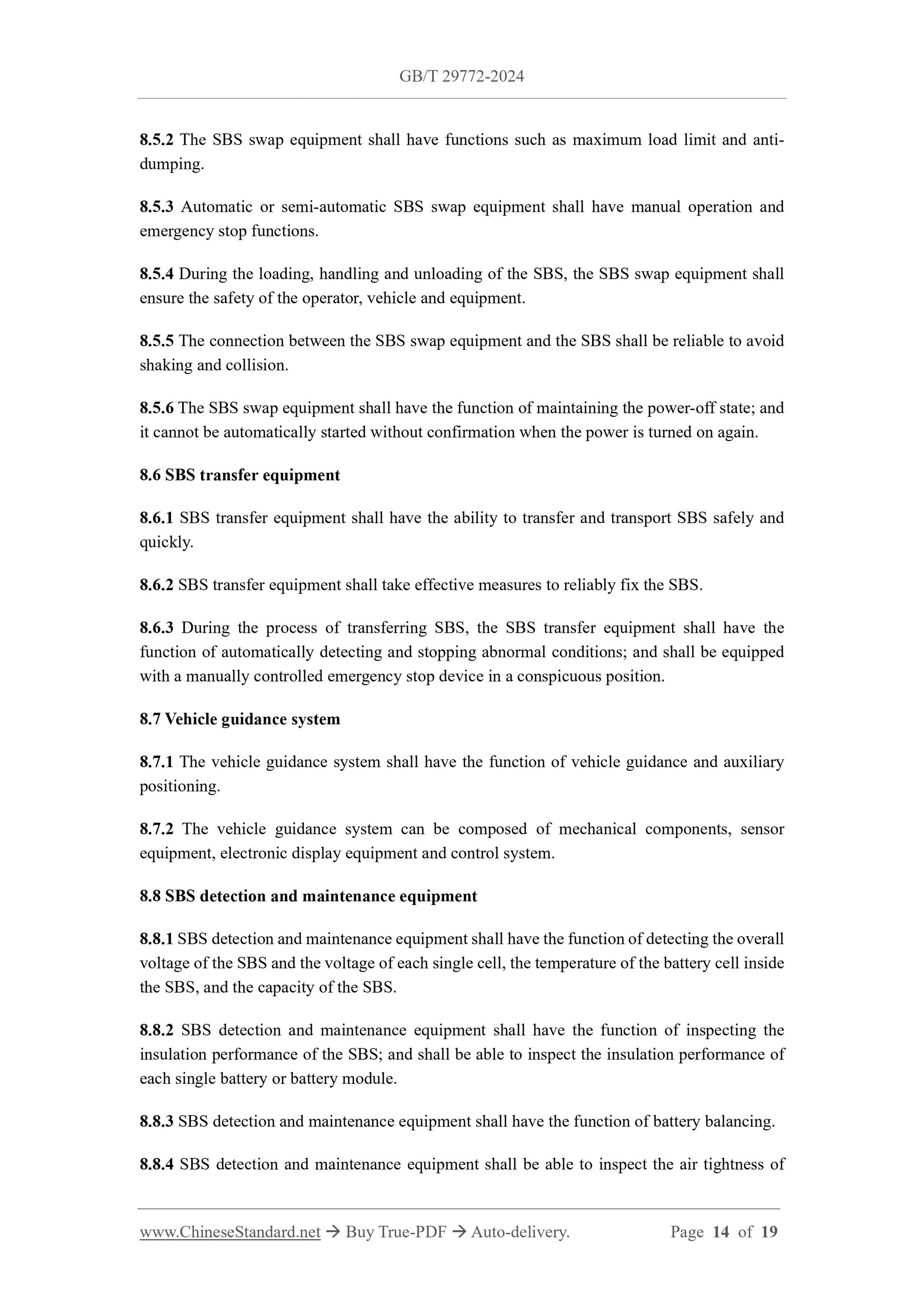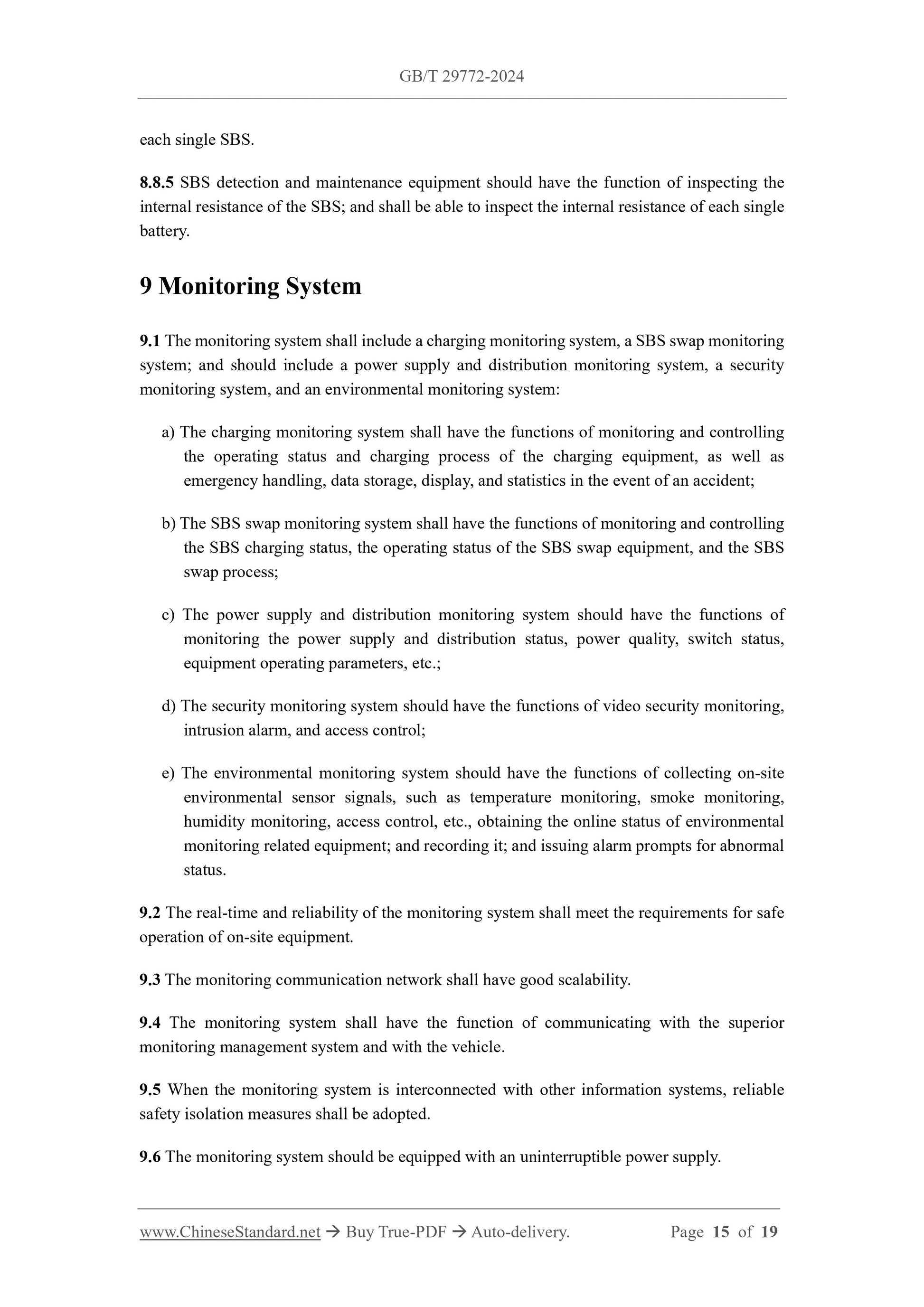1
/
of
11
www.ChineseStandard.us -- Field Test Asia Pte. Ltd.
GB/T 29772-2024 English PDF (GB/T29772-2024)
GB/T 29772-2024 English PDF (GB/T29772-2024)
Regular price
$275.00
Regular price
Sale price
$275.00
Unit price
/
per
Shipping calculated at checkout.
Couldn't load pickup availability
GB/T 29772-2024: General requirements of electric vehicle battery swap station
Delivery: 9 seconds. Download (and Email) true-PDF + Invoice.Get Quotation: Click GB/T 29772-2024 (Self-service in 1-minute)
Newer / historical versions: GB/T 29772-2024
Preview True-PDF
Scope
This Document specifies the overall requirements, classification, site selection, power supplyand distribution system, charging and battery swap system, monitoring system, lanes and
parking spaces, civil engineering, safety and fire protection, and markings and signs of electric
vehicle battery swap stations.
This Document applies to the design, construction and use of electric vehicle battery swap
stations.
Basic Data
| Standard ID | GB/T 29772-2024 (GB/T29772-2024) |
| Description (Translated English) | General requirements of electric vehicle battery swap station |
| Sector / Industry | National Standard (Recommended) |
| Classification of Chinese Standard | T35 |
| Classification of International Standard | 43.040.99 |
| Word Count Estimation | 14,152 |
| Date of Issue | 2024-12-31 |
| Date of Implementation | 2025-07-01 |
| Older Standard (superseded by this standard) | GB/T 29772-2013 |
| Issuing agency(ies) | State Administration for Market Regulation, China National Standardization Administration |
Share
